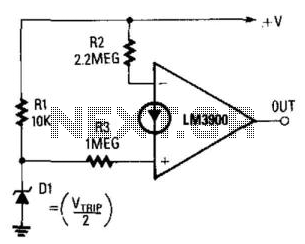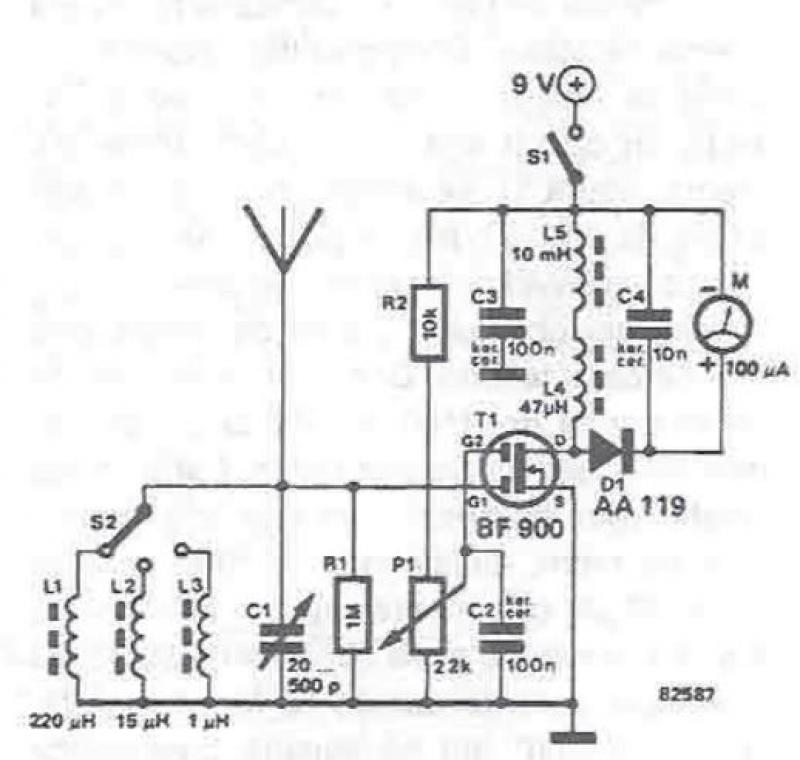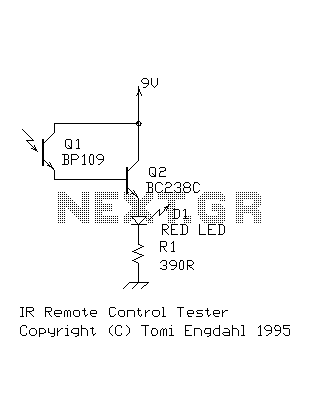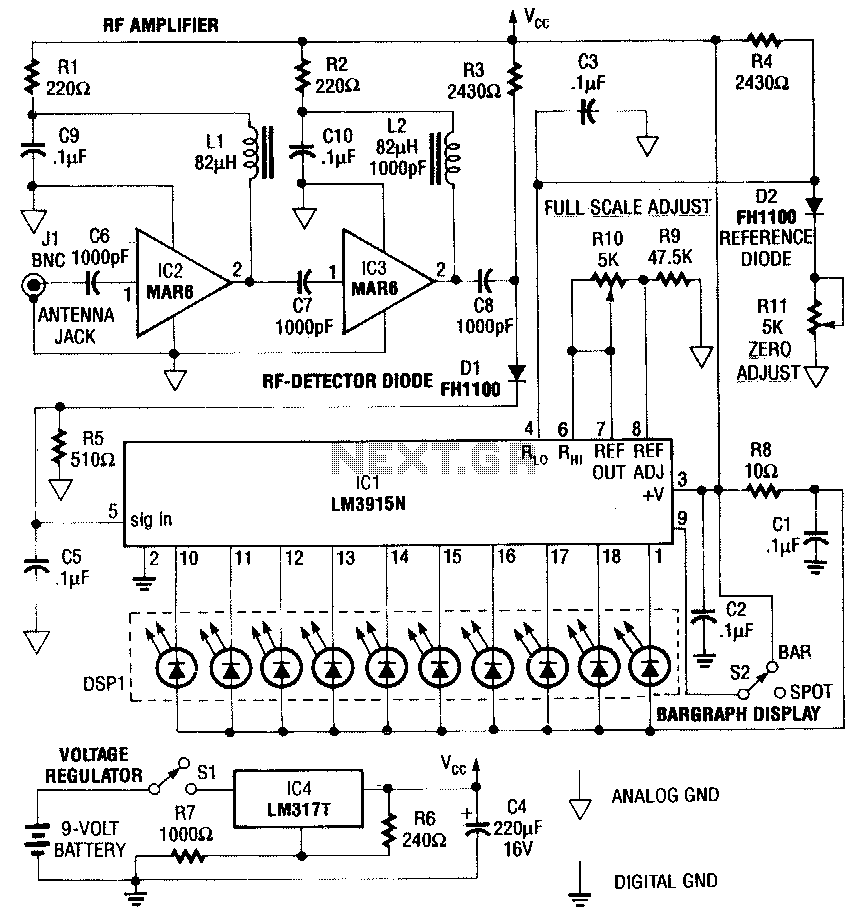
Minimal metal detector
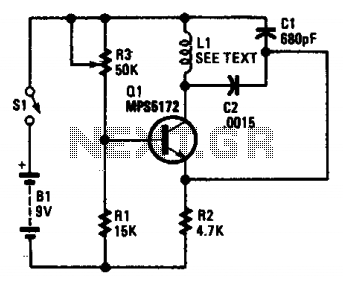
This circuit is an oscillator with LI being a 4-inch diameter coil consisting of 35 turns of #26 magnet wire. Metal in proximity to LI will cause the oscillator to shift frequency. An AM transistor radio is used to detect the frequency shift. The transistor used is the MPS5172 or a similar type.
The oscillator circuit described utilizes an inductor (LI) formed by a 4-inch diameter coil with 35 turns of #26 magnet wire. The inductance of this coil, combined with its resistance and the circuit's capacitive elements, establishes a resonant frequency that can be influenced by nearby metallic objects. When metal is brought close to the coil, it alters the inductance, thereby causing a shift in the oscillation frequency. This frequency modulation can be detected using an AM transistor radio, which receives the oscillating signal and converts it into audible sound, allowing for the observation of frequency changes.
The choice of the MPS5172 transistor is critical as it serves as the active component in the oscillator circuit. This NPN transistor operates efficiently at low frequencies and can handle moderate power levels, making it suitable for this application. The circuit design may include additional passive components such as resistors and capacitors to stabilize the oscillation and improve the overall performance of the oscillator.
To construct the oscillator, the coil (LI) is connected to the transistor's collector, while the base is driven by a feedback network that may include a capacitor to ensure that the circuit oscillates. The emitter is typically connected to ground. The oscillation frequency can be fine-tuned by adjusting the values of the capacitors in the feedback loop or by changing the number of turns in the coil.
In summary, this oscillator circuit effectively demonstrates the principles of inductance and frequency modulation, with practical applications in proximity sensing and detection using standard AM radio receivers. Proper design and component selection are essential for achieving reliable performance in detecting frequency shifts caused by nearby metallic objects.This circuit is on oscillator with LI being a 4" diameter coil of 35 turns of #26 magnet wire. Metal in proximity to LI will cause the oscillator to shift frequency. An AM transistor radio is used to detect the frequency shift. The transistor is the MPS5172 or use a similar. 🔗 External reference
The oscillator circuit described utilizes an inductor (LI) formed by a 4-inch diameter coil with 35 turns of #26 magnet wire. The inductance of this coil, combined with its resistance and the circuit's capacitive elements, establishes a resonant frequency that can be influenced by nearby metallic objects. When metal is brought close to the coil, it alters the inductance, thereby causing a shift in the oscillation frequency. This frequency modulation can be detected using an AM transistor radio, which receives the oscillating signal and converts it into audible sound, allowing for the observation of frequency changes.
The choice of the MPS5172 transistor is critical as it serves as the active component in the oscillator circuit. This NPN transistor operates efficiently at low frequencies and can handle moderate power levels, making it suitable for this application. The circuit design may include additional passive components such as resistors and capacitors to stabilize the oscillation and improve the overall performance of the oscillator.
To construct the oscillator, the coil (LI) is connected to the transistor's collector, while the base is driven by a feedback network that may include a capacitor to ensure that the circuit oscillates. The emitter is typically connected to ground. The oscillation frequency can be fine-tuned by adjusting the values of the capacitors in the feedback loop or by changing the number of turns in the coil.
In summary, this oscillator circuit effectively demonstrates the principles of inductance and frequency modulation, with practical applications in proximity sensing and detection using standard AM radio receivers. Proper design and component selection are essential for achieving reliable performance in detecting frequency shifts caused by nearby metallic objects.This circuit is on oscillator with LI being a 4" diameter coil of 35 turns of #26 magnet wire. Metal in proximity to LI will cause the oscillator to shift frequency. An AM transistor radio is used to detect the frequency shift. The transistor is the MPS5172 or use a similar. 🔗 External reference
